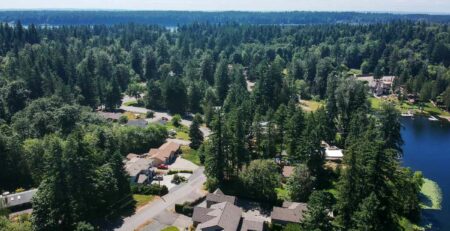Get the Highest ROI for Your Rental Property in Seattle, WA
Maximizing ROI is the most important for rental property owners as it directly impacts profitability and long-term financial success. Moreover, property owners can increase their rental income, generate positive cash flow, and build equity by maximizing ROI. Furthermore, high ROI ensures that the property provides a solid return on the initial investment, making it a worthwhile endeavor for investors.
Rental Properties in Seattle, WA
Seattle, WA, is a thriving rental market known for its strong demand and growth potential. With a booming tech industry, a vibrant cultural scene, and a high quality of life, Seattle attracts a steady influx of renters.
In addition, this focus on rental properties in Seattle presents excellent opportunities for investors to capitalize on the rental market’s potential. Moreover, by implementing effective strategies tailored to the Seattle market, property owners can maximize their ROI and take advantage of the city’s lucrative rental property landscape.
Analyzing the Local Real Estate Market in Seattle
- Research the average rental rates for different property types (apartments, houses, condos) in Seattle.
- Identify recent rental rates trends, such as increases or decreases, to understand the market direction.
- Similarly, Consider variations in rental rates across different neighborhoods within Seattle.
- Determine the current vacancy rates in the Seattle rental market to assess demand and supply dynamics.
- Again, analyze the trends in vacancy rates over the past few years to identify any significant changes.
- In addition, research the level of competition among rental properties regarding availability and occupancy rates.
Identify Desirable Neighborhoods in Seattle for Rental Properties:
- Consider proximity to amenities, schools, employment centers, and transportation.
- Evaluate neighborhoods based on the availability of amenities such as shopping centers, restaurants, parks, and recreational facilities.
- Look for neighborhoods with highly rated schools and educational institutions, which can attract families and increase rental demand.
- Assess the proximity of the neighborhoods to significant employment centers or job hubs, such as downtown Seattle or technology campuses.
- Consequently, consider the accessibility and availability of public transportation options, including bus lines, light rail, or proximity to major highways.
Determine the Right Property
Set Specific Investment Goals and Criteria
- Define your specific financial goals for the rental property, such as the desired annual return on investment.
- Assess the potential cash flow by estimating the rental income and subtracting the expected expenses.
- Moreover, evaluate the property’s appreciation potential by researching historical trends and future growth prospects.
Calculate the Potential Rental Income and Expenses
- Include factors like mortgage payments, property taxes, insurance, and maintenance costs:
- Estimate the monthly mortgage payment based on the property’s purchase price, down fee, and interest rate.
- Research property tax rates in the specific location and calculate the annual property tax expense.
- Consider the cost of insurance coverage for the property, including liability and property insurance.
- Estimate ongoing maintenance costs, such as repairs, landscaping, property management, and HOA fees.
Assess the Property’s Condition and Potential for Improvements or Renovations
- Estimate the cost and potential return on investment for upgrades:
- Conduct an inspection to identify maintenance or repair needs in the property.
- Evaluate the property’s overall condition and determine if any improvements or renovations are necessary to attract tenants or increase rental income.
- Estimate the desired upgrades or renovation costs and weigh them against the potential rental income or property value increase.
By setting specific investment goals and criteria, calculating the potential rental income and expenses, and assessing the property’s condition and potential for improvements or renovations, investors can make better decisions about the right rental property to maximize ROI. Moreover, this analysis helps align investment goals with the property’s financial performance and ensures that the chosen property aligns with the desired economic outcomes.
Financing and Investment Strategy
Explore Different Financing Options
- Consider traditional mortgages, private lenders, or partnerships:
- Research and compare mortgage options from various lenders, including banks, credit unions, or mortgage brokers.
- Explore the possibility of obtaining financing from private lenders or forming partnerships with other investors to secure funding for the rental property.
Determine the Optimal Investment Strategy
- Decide between long-term buy-and-hold or short-term rental strategies:
- Evaluate whether a long-term buy-and-hold strategy aligns better with your investment goals or if a short-term rental process, such as vacation rentals or Airbnb, is more suitable.
- Assess the pros and cons based on the local market conditions:
- Analyze factors such as rental demand, regulations, potential rental income, and management requirements to determine which investment strategy is most advantageous in the Seattle market.
Optimize Rental Income
Set Competitive Rental Rates
- Conduct thorough market research to understand the rental rates in the area and ensure your rates are competitive.
- Consider your property’s unique features, amenities, and conditions to justify setting higher rental rates, if applicable.
Minimize Vacancy Periods by Advertising
- To reach potential tenants, utilize various advertising channels such as online listings, social media, and local publications.
- Tailor your marketing efforts to target the specific tenant market most likely to be interested in your property.
Screen Potential Tenants
- Establish a rigorous tenant screening process that includes background checks, credit checks, income verification, and contacting references.
- Select tenants with a reliable, responsible, and financially stable history.
Consider Offering Additional Services or Amenities
- Identify opportunities to provide additional services or amenities that can enhance the appeal of your rental property, such as on-site laundry facilities, parking spaces, or pet-friendly policies, to attract tenants willing to pay a premium.
Manage Costs
Regularly Review and Negotiate Insurance Policies and Property Taxes
- Continuously review your insurance policies to ensure adequate coverage at the best possible rates.
- Stay informed about changes in property tax assessments and consider appealing if you believe the value is inaccurate.
Implement Cost-saving Measures for Maintenance and Repairs
- Proactively address maintenance issues to prevent them from becoming more expensive repairs.
- Obtain multiple quotes from contractors to ensure competitive pricing for maintenance and repair services.
Conduct Routine Property Inspections
- Regularly inspect the property to identify potential maintenance or repair needs before they escalate.
- Addressing issues can help minimize costs and maintain the property’s condition.
Monitor and Adjust
Keep Track of Financial Performance and ROI regularly
- Maintained detailed financial records and tracked the rental property’s income, expenses, and cash flow.
- Regularly calculate and assess the ROI to evaluate the property’s profitability.
Compare Actual Expenses and Income Against Projections
- Compare your actual expenses and rental income against the initial projections to identify discrepancies and adjust your budgeting and financial planning accordingly.
Analyze Market Trends and Adjust Rental Rates
- Stay informed about local market trends, such as rental rate fluctuations and changes in demand.
- Adjust rental rates or modify your investment strategy if market conditions warrant it.
Key Steps to Maximize ROI for Rental Properties in Seattle, WA:
Key steps should be followed to maximize ROI for rental properties in Seattle, WA. Firstly, thoroughly analyze the local real estate market and select the property based on specific investment goals and criteria. Secondly, explore various financing options and determine the optimal investment strategy, considering the prevailing market conditions. Moreover, to optimize rental income, set competitive pricing, employ effective advertising techniques, screen potential tenants diligently, and consider offering additional amenities to attract higher-paying tenants.
Consequently, managing costs is make-or-break, and this can be achieved by implementing cost-saving measures, conducting routine property inspections, and closely monitoring financial performance. Lastly, adapt to market conditions by analyzing trends, adjusting rental rates, and modifying investment strategies when required. Furthermore, it is essential to emphasize the significance of ongoing monitoring and adaptation to market conditions.
Finally, maximizing ROI necessitates continuous vigilance, evaluation, and timely adjustment in response to the ever-changing dynamics of the rental market. In the long run, long-term success and profitability can be achieved by staying proactive and responsive to market shifts.
















